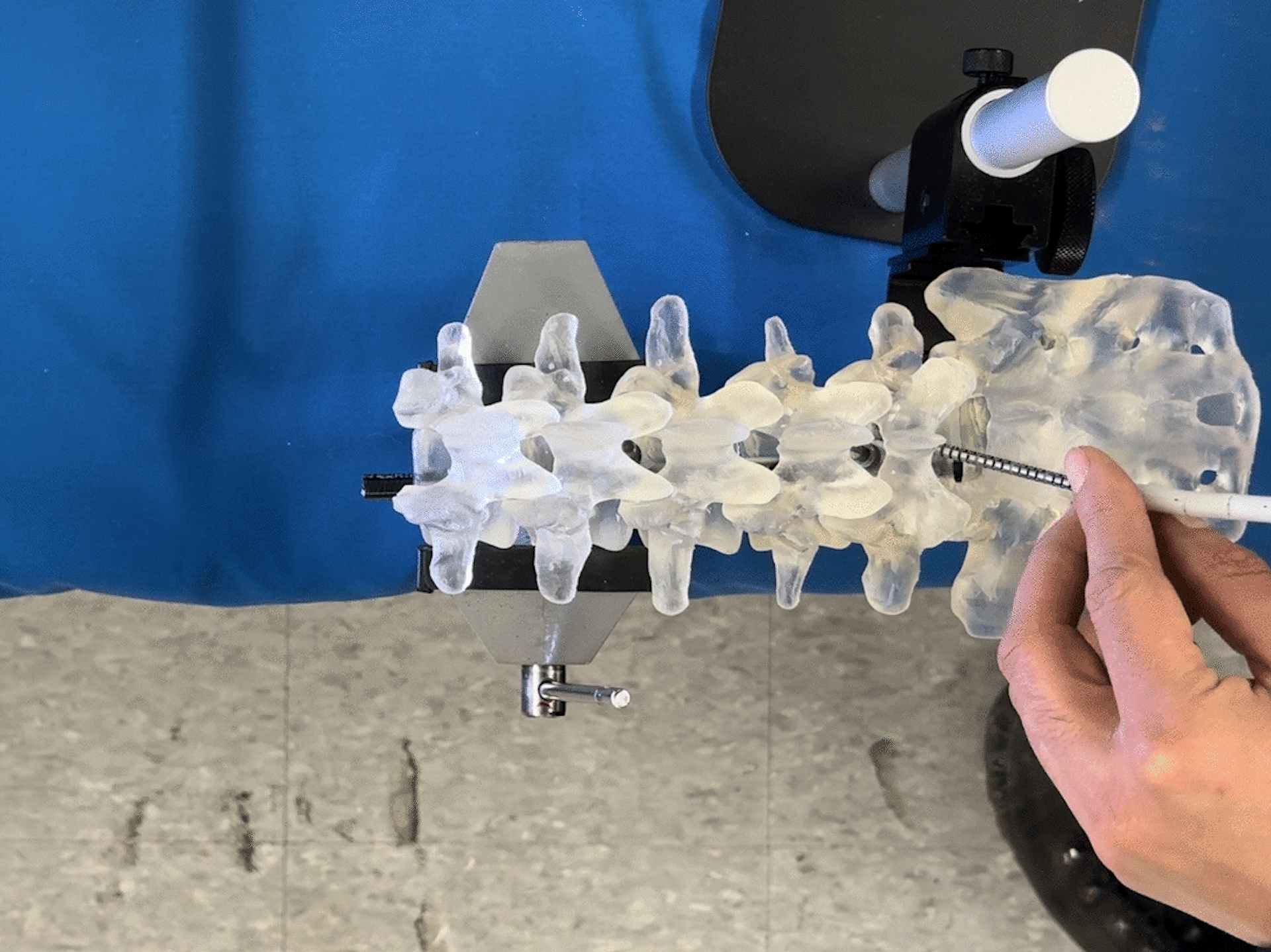ExoNav: A Novel Robotic Steering for Spinal Cord Stimulation Electrodes

Abstract
Robotic steering mechanism can be useful in the placement of electrodes in spinal cord stimulation (SCS) procedures. This article introduces an innovative steering and latching mechanism called the ExoNav, designed for SCS electrodes. By applying magnetic locking in the robotic system, a noncontact stabilization is established at the robot's base to reduce tendon-sheath coupling effects that are common in continuum robots. A kinematic model has been developed and validated to predict the robot's behavior when subjected to tendon actuation. To broaden the analysis, a comparative assessment is performed by comparing robot behavior in an experimental setup involving a free base, with one stabilized by an external magnet. Finally, proof-of-concept trials with a surgeon demonstrate the capability of the ExoNav robot in phantom spinal cord models.
BibTeX
@ARTICLE{10547577,
author={Jella, Harshith and Moradkhani, Behnam and Kheradmand, Pejman and Zemmar, Ajmal and Chitalia, Yash},
journal={IEEE/ASME Transactions on Mechatronics},
title={ExoNav: A Novel Robotic Steering and Latching Mechanism for Spinal Cord Stimulation Electrodes},
year={2024},
volume={},
number={},
pages={1-9},
keywords={Robots;Electron tubes;Tendons;Electrodes;Bending;Lead;Routing;Medical robotics;robot kinematics;surgical instruments;bio-inspired robotics},
doi={10.1109/TMECH.2024.3401139}}